A MODERN TOWN
From the events of the Royal Free Town of Podgórze 1784–1915
III. “NO HOME OTHER THAN… OF STONE OR BRICK SHOULD BE BUILT”
An imperial universal in 1784 tried to bring necessary order to the settlement chaotically growing on the south bank of the Vistula. With the development of the town and the safety of its residents in mind, a range of building regulations were introduced. The town engineer supervised the division of building plots, confirmed designs for homes and supervised their construction. In order to avoid fires, houses were to be built of stone or brick. The necessary materials could be obtained from the regional administration offices, which offered them at a low price, together with the option of deferring payment. There were regulations concerning the appearance of chimneys, roofs and guttering. They defined the width of fronts and the size of windows for buildings constructed on the main streets. Solid walls of the lower levels were to be a foundation for potential extensions.
At the end of the 1780s, the Austrian rulers modernized the roads and designated trading-postal routes connecting the new areas of the monarchy with its centre. Part of them went through Podgórze, along the current streets of Limanowskiego – Kalwaryjska as well as leading to the salt warehouses. From the main route, during the 19th and 20th centuries side streets were regularly built (e.g. the current Krakusa and Warneńczyka) as well as those outlying avenues characterized by free movement (e.g. the current Nadwiślańska and Józefińska), designated along former roads.
The creation of Podgórze Market Square is connected with the construction of a parish temple in 1832. Both designs are credited to a building officer from the regional administration office in Bochnia, Franciszek Brotschneider. The existing urban plan defined the shape of the square. The non-standard trapeze form was, however, fully utilized. Thanks to the narrowing market, the church seemed to be significantly larger than it actually was. The townhouses surrounding the square were kept in a classical style, characterized by their simple form and care of proportions.
The second market square in Podgórze, known as the Small Market Square (currently Plac Bohaterów Getta), was established after 1893 in the developing eastern part of the town.
Thanks to the regulations introduced at the end of the 18th century and in the first half of the 19th century, and the results of abiding by them, it was possible to maintain spacial harmony as well as functionality in Podgórze.
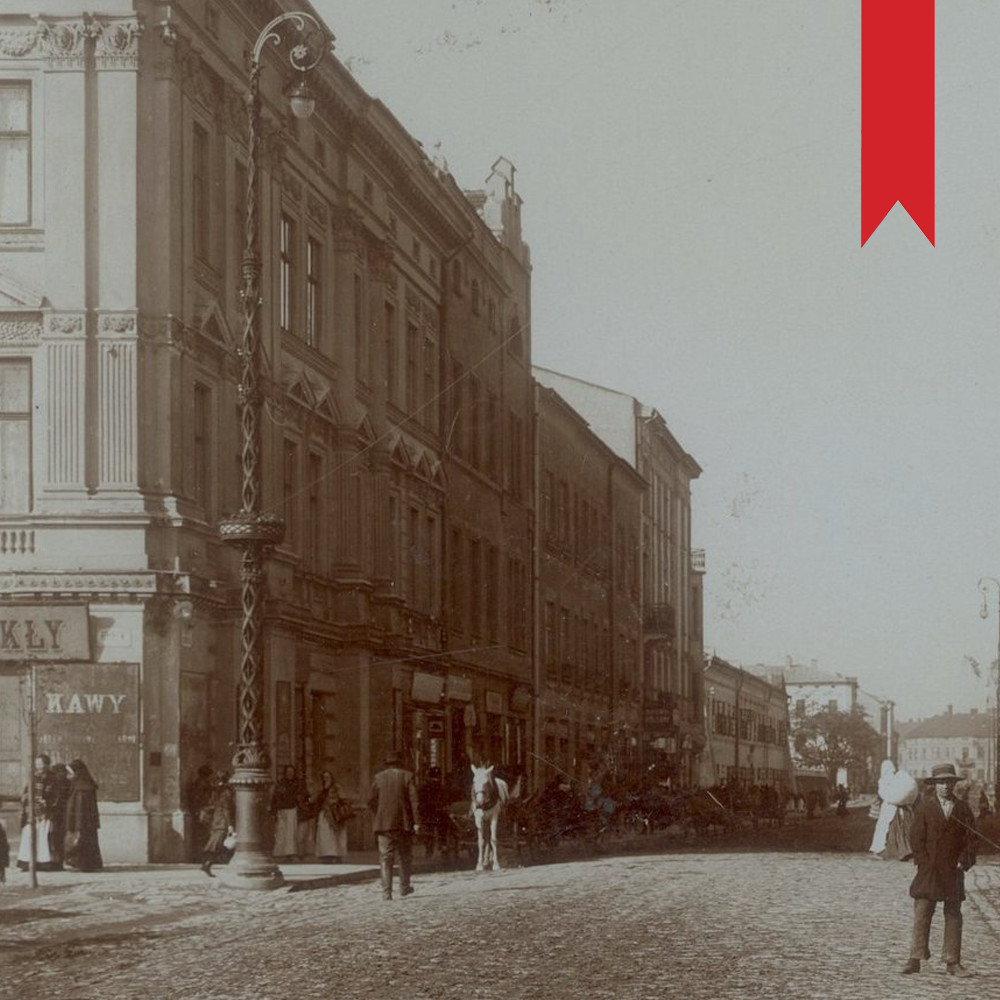
View of Kalwaryjska Street, undated
(ANK, ref. no. A-IV-694)
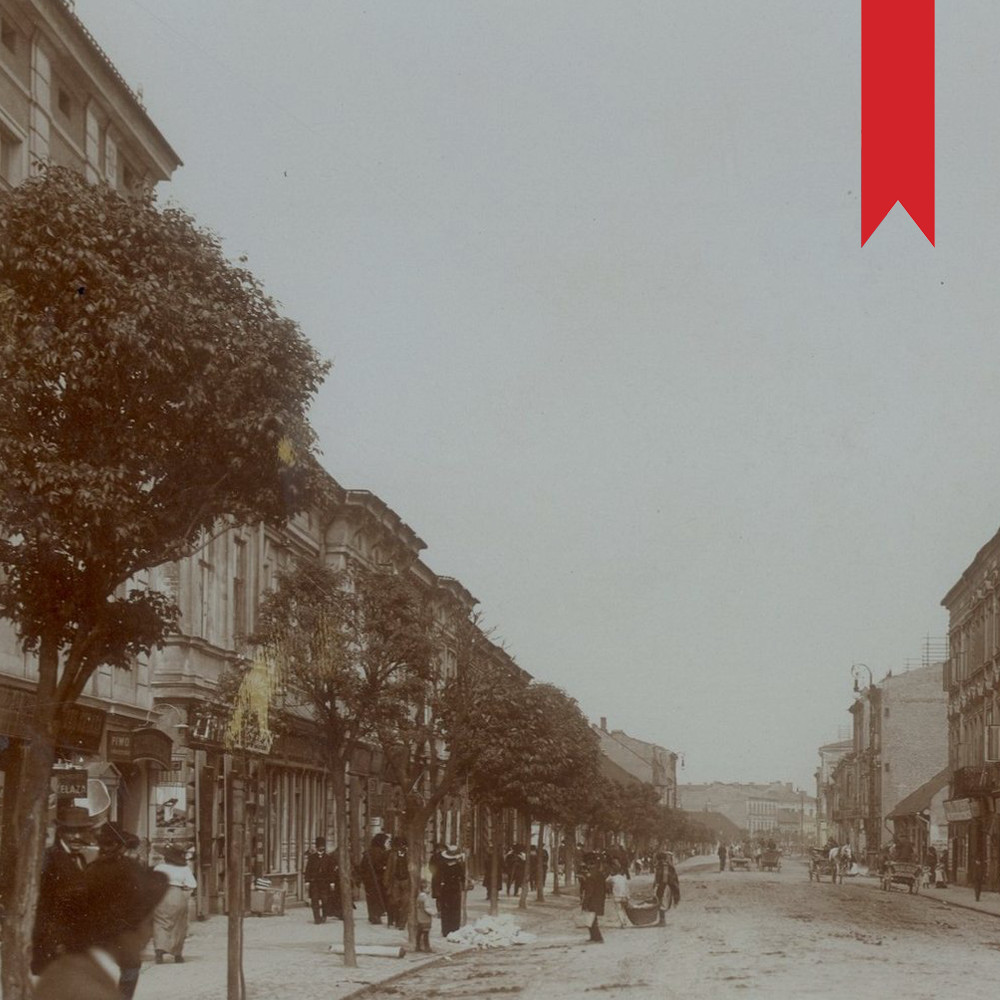
View of Lwowska Street (currently Limanowskiego), undated
(ANK, sygn. A-IV-728)

Act of the Podgórze Borough Council from 16 August 1875 confirming the names of streets in Podgórze, 1875
(ANK, ref. no. 29/53/6, pp. 80–81, pos. 291)
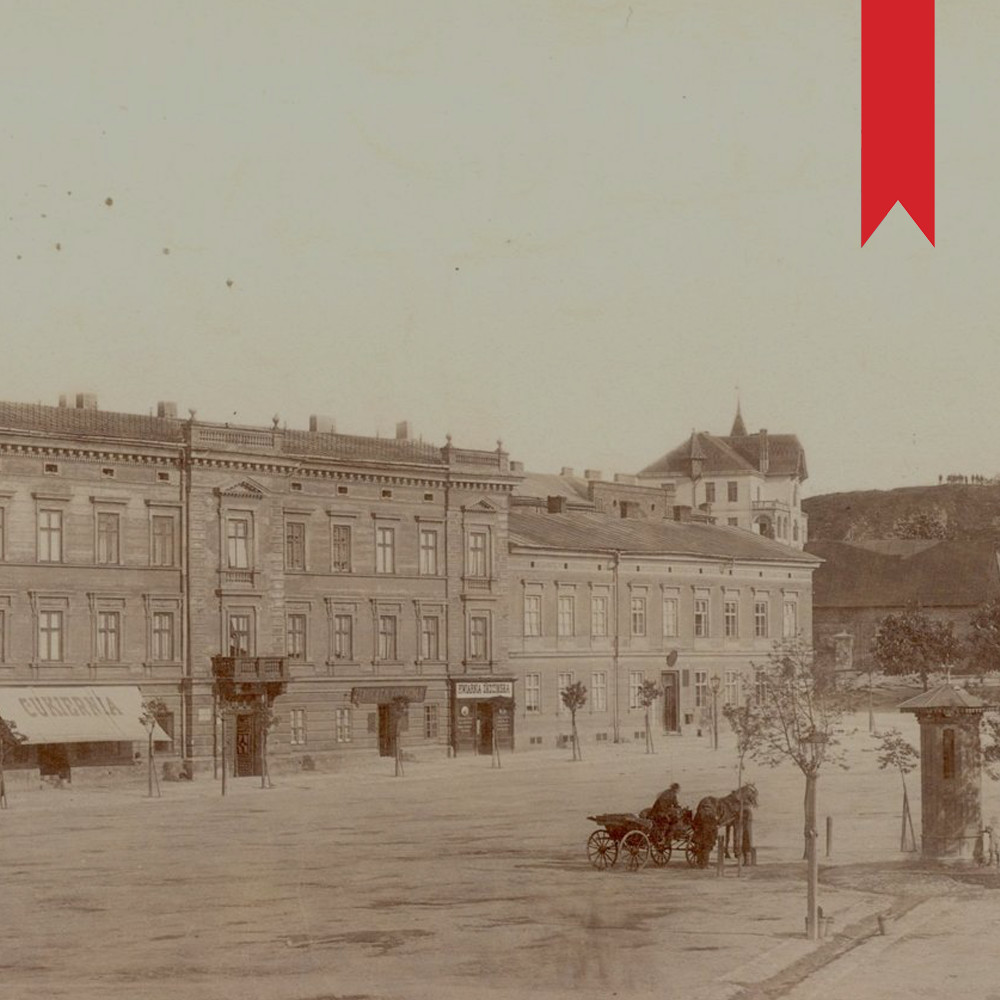
Podgórze Market Square with the first parish temple of Saint Joseph, undated
(ANK, ref. no. A-V-1380)
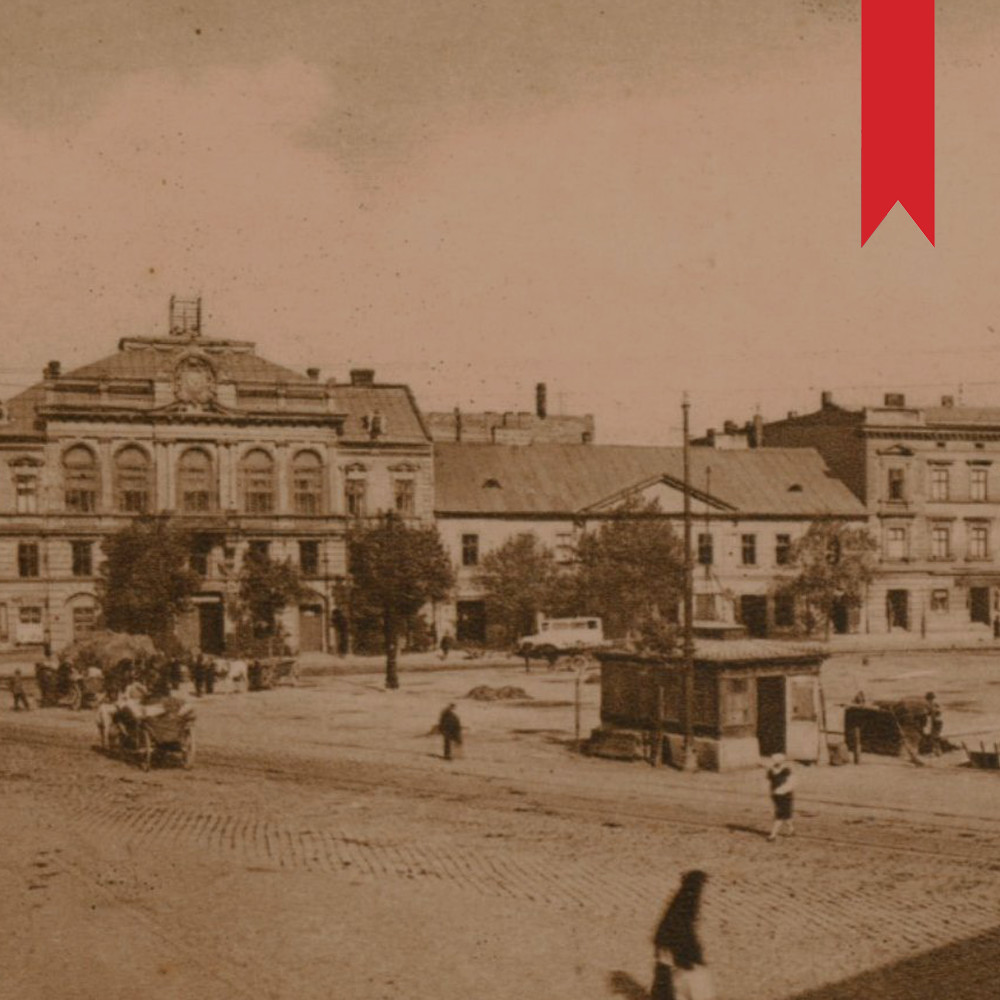
View of the eastern frontage of Podgórze Market Square with the New Town Hall located at the corner with Lwowska Street (currently Limanowskiego), undated
(ANK, ref. no. C-IV-72)
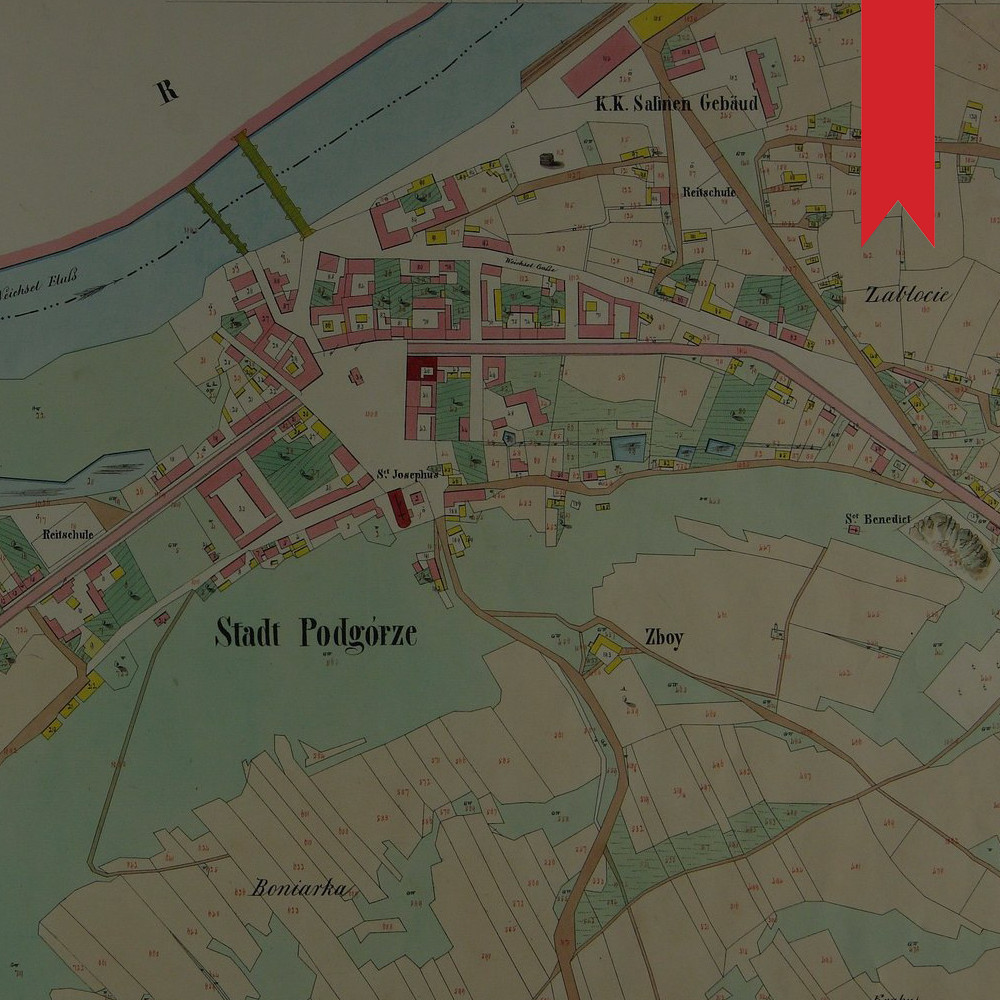
A fragment of the property tax map from the middle of the 19th century presenting the construction of the central part of Podgórze
(ANK, ref. no. KKrak 441-II)
